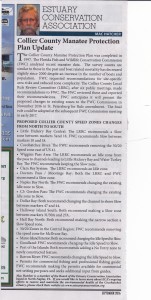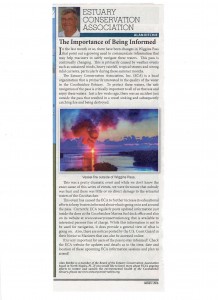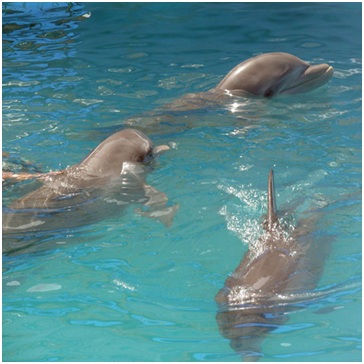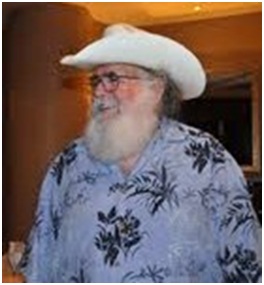All posts by Friends of Wiggins
August Coastal Angler Article
Sarasota Dolphin Study Shows that Dolphins Have Names
The study, conducted in Sarasota Bay, identified patterns in which whistles function as individual names.
Scientists at Mote Marine Laboratory and the Chicago Zoological Society conducted this groundbreaking study. One such scientist is Dr. Randall Wells, a leading expert in dolphin research. Dr. Wells explains that the basis for the “signature whistle” idea began in the mid-sixties. This study has finally confirmed what these scientists have suspected all along, and opened the door to further exploration of dolphin communication.
ECA hosts an Evening with Clyde Butcher
Internationally known nature photographer Clyde Butcher shared photos, videos and stories from his adventures while photographing landscapes in Southwest Florida.
The event, held January 29th at Aqua at Pelican Isle, was hosted by the Estuary Conservation Association, in partnership with the LaPlaya Beach and Golf Resort and Aqua at Pelican Isle. The evening began with a reception for over 60 invited guests, including Collier County Commissioner Georgia Hiller, and concluded with a presentation by featured speaker Clyde Butcher.
Clyde Butcher is an internationally recognized nature photographer whose stunning black and white landscapes, many taken right here in Southwest Florida, hang in galleries around the world. Mr. Butcher’s presentation ran for an hour and included pictures, videos, and stories of his many adventures during his years as a nature photographer.
ECA sponsored research aims to restore reefs in Cocohatchee estuary
 ECA, working in collaboration with Florida Gulf Coast University, has completed a two-year study of oyster reef habitats in the Cocohatchee estuary. Research results are being used to plan for environmental restoration of oyster reefs at targeted sites.
ECA, working in collaboration with Florida Gulf Coast University, has completed a two-year study of oyster reef habitats in the Cocohatchee estuary. Research results are being used to plan for environmental restoration of oyster reefs at targeted sites.
Why restore oyster reefs? Oysters perform important environmental functions in estuaries: they are highly efficient at filtering water, and serve as a refuge (or home) for shrimp, crabs, and fish that live in the Cocohatchee ecosystem. Research has shown that oyster reefs in Southwest Florida have decreased significantly since the 1960s.
How will ECA and FGCU restore oyster reefs? With help from local community partners and sponsors, ECA hopes to build on FGCU researchers success in restoring reef habitat by engaging local volunteers to place bags of oyster shell material in specific areas where environmental conditions are optimal. Oyster larvae, or “spat” thrive when they attach to the shell reefs.
How can I help? ECA is seeking local community sponsors to help share costs of a demonstration project designed to increase awareness about the need to restore and sustain the environmental health the Cocohatchee estuary. In addition, ECA is recruiting local volunteers to help with the transport and placement of shell bags in the estuary.




